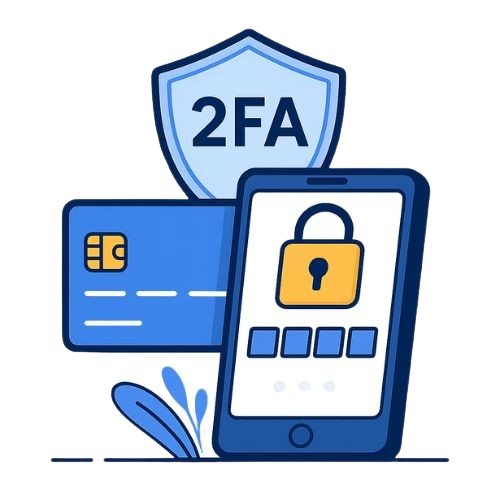Why Two-Factor Authentication Matters in Payment Systems

Online payments move money at the click of a button. Behind that convenience, security gaps can lead to lost revenue, stolen data and damaged reputations. Two-factor authentication (2FA) adds a critical step to the sign-in process, cutting down fraud and helping businesses protect both themselves and their customers.
How Two-Factor Authentication Works
At its core, 2FA asks users to provide two separate proofs of identity:
- Something you know (a password or PIN)
- Something you have (a hardware token, one-time code via SMS or an authenticator app)
Even if a password is compromised, the criminal still needs the second factor to get through. This extra barrier turns stolen credentials into dead ends.
Reducing Fraud in Payment Processing
Payment systems are an obvious target for fraudsters. By forcing a second check, 2FA slashes the success rate of stolen-credential attacks:
- Phishing resistance: Attackers get passwords but can’t finish the login without a second factor.
- Account takeover prevention: Hijacking a user’s account becomes much harder when the thief lacks the physical device or code.
- Chargeback reduction: Fewer fraudulent orders mean fewer disputes, less time spent on investigations and lower fees.
Integrating 2FA into your checkout flow pairs well with a fraud prevention system that monitors transactions for suspicious activity, giving you a two-layer shield against bad actors.
Building Customer Trust
Buyers feel uneasy if they think their credit card details could leak online. Prompting for a quick code reassures them that you take security seriously. That trust shows up in:
- Higher checkout conversions: Shoppers who sense protection are more likely to finish their purchase.
- Better brand reputation: Positive word-of-mouth grows when customers know their data is safe.
- Repeat business: A secure experience turns first-time buyers into loyal patrons.
By making security visible, you signal that you care about their money as much as they do.
Meeting Regulatory Requirements
Many markets require payment providers to adopt strong customer authentication under regulations like PSD2 in Europe or similar rules elsewhere. Deploying 2FA demonstrates compliance in payment processing and helps you avoid hefty fines or forced suspension of services.
Special Considerations for Cryptocurrency Transactions
Crypto payment rails bring unique risks. Wallets and exchange accounts can be emptied in minutes if a hacker scores a private key. Adding 2FA at every access point—account login, withdrawal request and API call—thwarts automated theft attempts. When combined with cryptocurrency fraud prevention strategies, merchants can accept crypto payments with confidence.
Balancing Security and Usability
Critics say extra steps slow down the checkout. That can be true if gone overboard. Try these tactics to keep friction low:
- Risk-based prompts: Only ask for 2FA when the system spots unusual behavior (new device, different location, high-value order).
- Multiple delivery methods: Let users choose SMS codes, email tokens or app-based authenticators.
- Remembered devices: Offer customers the option to skip 2FA on personal, frequently used devices for a set time period.
Smart implementation keeps logins quick for most while still blocking threats.
Beyond Payments: Account Security
Once 2FA is in place for checkout, extend it to all account areas:
- Profile updates: Change passwords, billing info or delivery addresses only after a second code.
- API access: Require 2FA for developers calling sensitive endpoints.
- Admin dashboards: Protect backend systems that control pricing or refunds.
That way, every login point benefits from the same extra layer of protection.
Getting Started with Two-Factor Authentication
- Choose your methods: SMS, email, authenticator apps or hardware tokens.
- Integrate via API or plugins: Most platforms support 2FA modules.
- Inform your customers: Publish a short tutorial on how to enroll and use their second factor.
- Monitor performance: Track completion rates, fraud metrics and support tickets to fine-tune the experience.
- Combine with other safeguards: Link 2FA with your accept online payments tools and anti-fraud checks for full coverage.
Conclusion
Adding two-factor authentication is one of the most straightforward steps you can take to protect payment systems. It stops credential abuse in its tracks, builds customer confidence and helps you meet regulatory obligations. Whether you handle credit cards, digital wallets or cryptocurrencies, this extra code-based checkpoint turns a single-lock security model into a multi-lock fortress—guarding revenue, reputation and user data all at once.